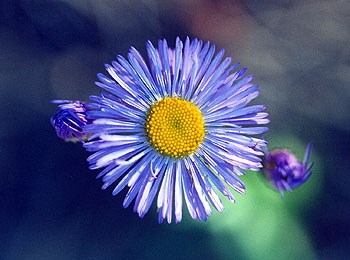
NPS Photo by Barry Nielsen Wildflowers of the Gila Cliff Dwellings National MonumentThe Gila Cliff Dwellings National Monument is a place where history, culture, and nature converge. Amidst the rugged landscapes and ancient dwellings, a vibrant array of wildflowers bloom, painting the scenery with their colors and bringing life to the rocky terrain. Visitors exploring the area from spring through early fall will encounter a stunning variety of wildflowers that reflect the diversity and beauty of the Gila region. Yellow Columbine (Aquilegia chrysantha)The Yellow Columbine is a delicate and striking wildflower that thrives in the moist, shady areas of the Gila Cliff Dwellings. Its bright yellow flowers, with spurred petals, create a stunning contrast against the green foliage. This perennial plant is often found near streams and shaded canyon areas, adding a splash of color to the cool, serene spots within the monument. The Yellow Columbine is also a favorite of hummingbirds, making it a delightful sight for bird watchers. Common Sunflower (Helianthus annuus)Standing tall and proud, the Common Sunflower is a familiar sight across the Gila. These towering flowers, with their large, bright yellow petals and dark centers, can grow over six feet tall. They often line the sunny trails and open fields near the cliff dwellings, attracting a variety of pollinators, including bees and butterflies. Beyond their beauty, sunflowers have been historically significant to the Indigenous peoples of the region, used for both food and medicine. False Solomon's Seal (Maianthemum racemosum)False Solomon’s Seal is a graceful, woodland wildflower that prefers the shaded, forested areas of the monument. This plant features arching stems with clusters of small, white flowers that bloom in late spring to early summer, later forming small red berries. It’s typically found growing among the rich undergrowth of the Gila’s forests, providing a lovely, understated beauty to the shaded trails and moist canyon floors. Scarlet Penstemon (Penstemon barbatus)The Scarlet Penstemon is a brilliant addition to the Gila’s wildflower tapestry. This tall, tubular-flowered plant can be found growing in dry, rocky areas, often alongside the trails. Its vivid red flowers are a beacon for hummingbirds, which are frequent visitors to the plant. The Scarlet Penstemon blooms from late spring to early summer, standing out against the arid landscape with its intense, fiery color. Butterfly Weed (Asclepias tuberosa)A magnet for butterflies, especially monarchs, Butterfly Weed is a stunning orange-flowered plant that thrives in the open, sunny areas of the Gila. This wildflower is a species of milkweed, known for its clusters of bright orange flowers that bloom from late spring to early fall. It is not only beautiful but also plays a crucial role in the ecosystem by providing food for caterpillars and nectar for adult butterflies. Firewheel (Gaillardia pulchella)Also known as Indian Blanket, the Firewheel is a showy wildflower that adorns the Gila’s landscapes with its striking red and yellow petals. This hardy plant thrives in dry, open areas, often flourishing along trails and in meadows. The Firewheel’s vibrant colors and daisy-like appearance make it a favorite among visitors, and its long blooming season ensures that it remains a prominent feature throughout the warmer months. Indian Paintbrush (Castilleja integra)The Indian Paintbrush adds a splash of vivid color to the Gila’s wildflower display. This plant, with its bright red-orange bracts, resembles a paintbrush dipped in vibrant paint, hence its name. Often found growing in rocky, well-drained soils, the Indian Paintbrush blooms from spring to summer and is commonly seen alongside other wildflowers, creating a colorful mosaic on the landscape. It is also known for its semi-parasitic nature, drawing nutrients from the roots of neighboring plants. Sacred Datura (Datura wrightii)The Sacred Datura, also known as Jimsonweed, is a striking and somewhat mysterious wildflower that can be found in the Gila. Its large, trumpet-shaped white flowers bloom in the evening and early morning, releasing a sweet fragrance that attracts night-flying pollinators such as moths. While beautiful, Sacred Datura is also toxic and has been used in traditional ceremonies by Indigenous peoples for its powerful psychoactive properties. It typically grows in dry, disturbed areas and adds an air of mystique to the Gila’s floral diversity.
|
Last updated: April 24, 2025
